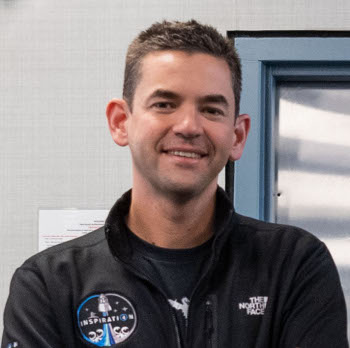SpaceX sets August 26, 2024 as new launch date for Polaris Dawn private manned mission

Jared Isaacman
According to a post on X yesterday, SpaceX has rescheduled the launch of the private Polaris Dawn manned orbital flight to August 26, 2024. The flight is financed entirely by billionaire Jared Isaacman, who will also command the mission (his second in space).
The mission will launch on a Falcon 9, with the Dragon Resilience spacecraft carrying four private astronauts. During the orbital flight the capsule will attempt to fly as high as 870 miles, the highest any human will have flown since the Apollo missions. It will then attempt the first spacewalks by a private citizen ever. They will open a hatch, and Isaacman will push himself outside.
The schedule change from July 31st is almost certainly due to the uncertainties surrounding the return of Starliner from ISS, which have also caused uncertainties in the launch date of SpaceX’s next manned mission to ISS. With only two launchpads in Florida for both missions (plus other required launches), a lot of juggling has been required.

Jared Isaacman
According to a post on X yesterday, SpaceX has rescheduled the launch of the private Polaris Dawn manned orbital flight to August 26, 2024. The flight is financed entirely by billionaire Jared Isaacman, who will also command the mission (his second in space).
The mission will launch on a Falcon 9, with the Dragon Resilience spacecraft carrying four private astronauts. During the orbital flight the capsule will attempt to fly as high as 870 miles, the highest any human will have flown since the Apollo missions. It will then attempt the first spacewalks by a private citizen ever. They will open a hatch, and Isaacman will push himself outside.
The schedule change from July 31st is almost certainly due to the uncertainties surrounding the return of Starliner from ISS, which have also caused uncertainties in the launch date of SpaceX’s next manned mission to ISS. With only two launchpads in Florida for both missions (plus other required launches), a lot of juggling has been required.

